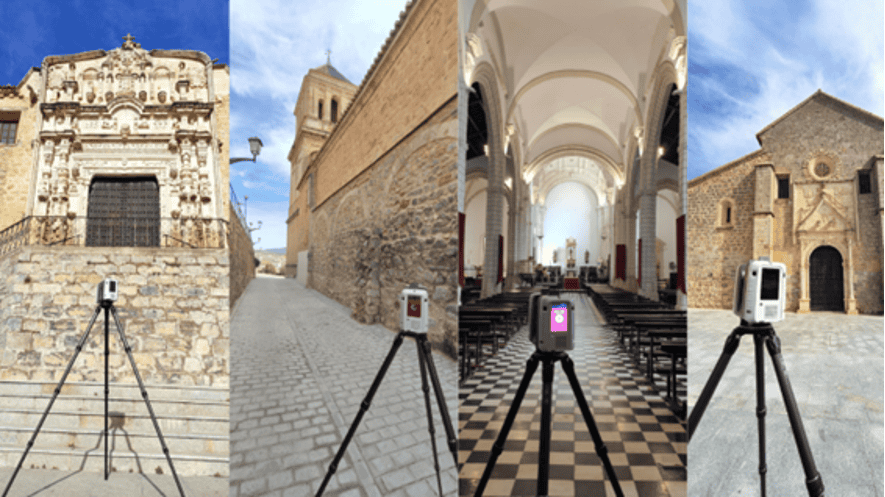At Fisotec, we’ve recently taken on the challenge of applying our BIM technology expertise to a unique project: the Church of Santa María la Mayor, located in the heart of Alcaudete. This project aims to reinforce its existing classification as a cultural heritage site, providing a three-dimensional model to highlight its architectural virtues in the face of possible future modifications, both for engineering and construction purposes as well as for tourism.

What was the purpose of this BIM project?
The purpose of our work at Santa María la Mayor, as mentioned, is to reinforce its existing BIC classification, using a BIM model as evidence of its historical and architectural value. On the other hand, the intention was to use this model to promote the church as a monumental jewel of the municipality from a tourist perspective.

The process was meticulous and complex, starting with the laser scanning phase for data collection. This initial stage allowed us to create a detailed point cloud, which was later transformed into a high-fidelity 3D model.

The greatest complexity lay in achieving an LOD350 definition level, a medium-high standard in terms of detail in BIM modeling. This level of detail was crucial to capture the richness and complexity of the building, particularly challenging due to its stone elements and intricate carvings.
The carved stone details, one of the main challenges
We faced various challenges throughout the project, mainly related to the precision required to document a historical structure of such magnitude. Creating an LOD350 model involved considerable effort to ensure that every architectural detail was faithfully captured, from the overall structure to the finest stone carvings.

This project at Santa María la Mayor in Alcaudete is a clear example of how BIM technology not only serves the construction and maintenance of new buildings but is also an invaluable tool for the conservation and promotion of cultural heritage.

At Fisotec, we are proud to contribute to this noble purpose, once again demonstrating the versatility and transformative power of BIM technology in the engineering, construction, and now, cultural preservation sectors.


